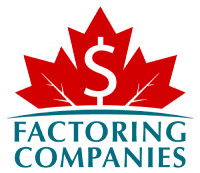
It’s often said that every financial decision is a tradeoff. Most business funding solutions clearly demonstrate this. For instance, if you want a loan, you’ll pay it back with interest. If you want equity funding, you’ll give up some control of your business. We see this in invoice factoring agreements, too. Although you won’t pay interest or give up company shares, there are concerns that can impact your bottom line and flexibility. Knowing where these potential pitfalls lie and negotiating terms that align with your business needs is key to having a factoring agreement that truly supports your business growth. Below, we’ll walk you through how to spot these potential roadblocks and what to do if you catch them in your contract.
Understanding Factoring Agreements
Before we get into identifying factoring agreement challenges, it’s essential to have a firm understanding of how factoring agreements work. At its core, a factoring agreement is a contract between your business and a factoring company, also called a factor, that outlines the terms under which the factor will purchase your invoices. In exchange, the factor provides you with immediate cash flow while taking over the collection process for those invoices. Because this setup can be beneficial in many situations, the industry is rapidly growing, according to Grand View Research.
The Basics of Factoring Agreements
Factoring involves trading outstanding invoices for a cash advance. Here’s a quick summary of how the process usually works.
- Invoice Submission: You submit eligible invoices to the factoring company, which then purchases them at a discount, typically 95 to 99 percent of the invoice value.
- Advance and Holdback: The factor gives you an advance that’s usually around 60 to 95 percent of the invoice value and holds back the remainder until they’ve collected from your customer.
- Collection and Final Payment: Once your customer pays the invoice, the factor deducts their fees and releases the remaining balance to you.
This arrangement is straightforward, but the terms within your agreement can vary widely between factoring companies, and those details matter.
Key Considerations in Factoring Agreements
A solid understanding of the critical aspects of factoring contracts can help you spot potential issues down the line. Here are some essential elements to keep an eye on.

- Advance Rate and Fees: The advance rate dictates how much cash you’ll receive upfront. Watch out for fees, which may include processing fees, collection fees, or additional interest if your customer is slow to pay.
- Recourse vs. Non-Recourse: In a recourse factoring agreement, you’re responsible if the customer doesn’t pay. This means the factor can come back to you to cover the unpaid invoice. With non-recourse factoring, the risk is on the factor, but these agreements tend to come with higher fees.
- Duration and Termination: Some agreements have minimum contract terms, so check how long you’re tied in and what the exit conditions are. Contracts can have high exit fees if you want to leave early.
- Notification vs. Non-Notification: In a notification arrangement, your customers are aware that a factoring company is handling collections, whereas, in a non-notification setup, they are not.
Identifying Common Obstacles in Factoring Contracts
While factoring can be a fantastic cash flow solution, some agreements come with potential pitfalls that can affect your business’s finances and flexibility. Identifying these common roadblocks early on is essential to avoid hidden costs or restrictive clauses that could tie up your cash flow instead of freeing it.
High Fees and Hidden Charges
Factoring fees can vary significantly, and without a careful review, you might end up paying more than expected. Here’s what to look out for.
- Service Fees: Beyond the standard discount rate, some factors charge fees for each invoice, additional charges for overdue payments, or processing fees for administrative tasks.
- Minimum Volume Fees: If your agreement includes a minimum volume requirement, failing to meet it can lead to penalties. This can be particularly restrictive if your business has fluctuating sales cycles.
Restrictive Terms and Conditions
Factoring agreements sometimes include terms that limit your business’s flexibility or lock you into long-term arrangements that are difficult to exit. Here are some of the most common restrictive terms to watch for.
- Long Contract Durations: Some factoring agreements require a minimum contract length, sometimes lasting a year or more. Exiting early could result in hefty termination fees.
- Exclusive Agreements: Some factors require exclusivity, meaning you must submit all of your invoices to them. This setup can tie your hands, especially if you’d like the option to seek financing from other sources or only factor certain invoices.
- Customer Concentration Limits: In some cases, the factor may restrict the amount of credit they’ll extend based on your client base. If you rely heavily on a single client, the factor may limit the funding available for that customer’s invoices.
Factoring Agreement Red Flags to Watch for
Here are some red flags that often indicate an agreement might have too many roadblocks.
- Opaque Fee Structure: If the factoring company isn’t upfront about all their fees, that’s a red flag. A transparent partner will provide a clear breakdown.
- One-Size-Fits-All Contracts: Some factors use template contracts that aren’t tailored to your industry or business needs. Ideally, your agreement should reflect your company’s specific challenges, seasonality, or client profile.
- Vague Terms on Recourse: If you’re not clear about whether the agreement is recourse or non-recourse, push for clarification. Recourse factoring can be risky if you’re not fully prepared to take on that liability.
Understanding these common roadblocks is your best defense against signing a contract that ends up costing more than it’s worth. Always ask the factor to walk you through every fee and condition to ensure you’re getting a fair, transparent agreement. This due diligence can save your business from unexpected expenses or operational limits down the line.
Navigating the Terms of Your Factoring Agreement
Understanding factoring agreement terms isn’t just about skimming the basics. There’s often nuanced language that can significantly impact your business operations. Navigating these terms well means knowing where to focus your attention, spotting areas you can negotiate, and making sure the agreement aligns with your business goals.
Deciphering the Fine Print: What to Look For
A lot of factoring agreements contain fine print that’s easy to overlook but can have a big impact on your cash flow and flexibility. Here are some essential details to review carefully.
- Recourse vs. Non-Recourse: Knowing who’s liable if your client doesn’t pay is key. In a recourse agreement, you’re responsible for unpaid invoices, meaning the factor can come back to you for payment. A non-recourse agreement is usually more expensive but shifts the risk to the factoring company, which may be worth considering if your clients’ payment reliability is uncertain.
- Reserve and Holdback Terms: Most factors retain a percentage of the invoice value until they’ve collected from your client. This reserve or holdback is returned minus fees. Make sure you’re clear on the timing of these repayments and any specific terms around when they release the reserve funds.
- Fee Types and Structures: Some factors layer in fees for processing, collections, and even for having accounts open during quiet periods. Watch for terms like “minimum invoice” or “early termination” fees that can surprise you if you’re not regularly factoring invoices.
- Customer Service and Fees: It’s worth asking about customer service fees and whether there’s any flexibility here. Some factors charge extra for additional support, so if you value direct access to an account manager or faster response times, be sure to weigh those options.
Negotiating Terms for Better Flexibility

Believe it or not, many factoring terms are negotiable. Factors want to keep clients, so if you’re prepared, you can often improve the terms.
- Volume Commitments: If your business is seasonal, try to negotiate flexibility in monthly volume requirements. Rather than locking into a monthly minimum, see if the factor will agree to an average over the course of the year.
- Early Termination Fees: If you’re uncertain about long-term factoring, request a shorter contract period or negotiate down any early exit fees. Having this flexibility means you won’t be stuck in an agreement that doesn’t serve your business as it grows or changes.
- Discount Rate Adjustments: Some factors base the discount rate on volume, so if you’re anticipating higher volume over time, use this to negotiate a better rate.
Navigating Factoring Agreement Issues
Following a few basic best practices can help with preventing problems in factoring arrangements and addressing them if they come up.
- Read Carefully: Terms like recourse, holdbacks, and various fees can greatly impact your cash flow.
- Ask Questions: Factoring companies often expect questions; a good one will be happy to clarify and explain.
- Negotiate Where Possible: Don’t assume terms are set in stone. Negotiating for flexibility, especially in volume and fee structures, can save your business money and headaches down the road.
Legal Clauses and Their Implications
Legal clauses in a factoring agreement may seem dense, but they play a significant role in protecting your business—or, if overlooked, putting it at risk. These clauses define the rights, responsibilities, and potential liabilities on both sides, so it’s worth diving into what they mean and how they can affect your operations.
Common Legal Clauses Explained
Understanding a few key legal clauses can help you avoid surprises. Here are some of the most common ones.
- Assignment of Rights: This clause gives the factoring company the right to collect on your invoices, essentially transferring your claim to the payment. Make sure the terms around assignment are clear, especially if there are any restrictions on which invoices can be factored.
- Notification vs. Non-Notification Clauses: In a notification agreement, your clients are informed that their invoices are now managed by a factoring company. In a non-notification agreement, the factor works behind the scenes, and your clients remain unaware.
- Termination Clauses: These specify how and when you can exit the agreement. Early termination fees can sometimes be steep, especially in contracts with long durations. If you want flexibility, negotiate a shorter term or ensure there’s an affordable way out.
- Indemnification Clauses: This clause states that you’ll cover any losses the factor incurs due to misinformation on your part. If you provide incorrect or incomplete data on an invoice, this clause could hold you liable. Ensure your reporting processes are solid to avoid potential issues here.
Protecting Your Business from Unfavourable Clauses
While some clauses are standard, others might put your business at a disadvantage. Here’s how to protect yourself from caution points in factoring contracts.
- Review with a Legal Expert: Factoring agreements are complex, and a lawyer experienced in business financing can help you spot any red flags. They can interpret terms like indemnification and recourse obligations and advise you on what’s reasonable.
- Avoid Clauses with One-Sided Terms: Some agreements may overly favour the factor, such as clauses that allow them to alter terms unilaterally. Try to negotiate clauses that hold both parties accountable or, at the very least, protect your business from sudden changes in terms.
- Request Modifications to Certain Clauses: It’s possible to ask for adjustments, especially on clauses that seem overly restrictive. For example, you might negotiate the termination terms if you feel the exit fees are excessive or request the removal of any exclusivity requirement.
- Confirm the Dispute Resolution Process: Some agreements specify how disputes are resolved, often requiring mediation or arbitration instead of a court case. Check where this would occur and ensure it’s feasible for your business if issues arise.
Ensuring Smooth Transactions
Once your factoring agreement is set, the next step is keeping transactions running smoothly so you can enjoy the benefits of consistent cash flow without unnecessary friction. Building a positive working relationship with your factoring company and staying proactive with communication can make all the difference. Here’s how to ensure things run without a hitch.
Effective Communication with Your Factor
Good communication can prevent many of the common hiccups businesses face in factoring arrangements. Here’s how to establish and maintain open lines of communication.
- Set Clear Expectations Upfront: Make sure you’re on the same page with the factor regarding timelines, funding processes, and any potential issues that could arise. Ask how quickly they process invoices, how they handle late payments, and what their usual response times are.
- Assign a Point of Contact: Have someone on your team designated to liaise with the factoring company. This person can handle invoice submissions, respond to requests for information, and address any issues as they come up.
- Regular Check-Ins: Don’t wait until there’s a problem to communicate. Schedule regular check-ins, especially in the early stages, to catch any misunderstandings or issues before they escalate.
Regular Review and Adjustment of Your Agreement
Your business is always evolving, and your factoring needs may change over time. Reviewing your agreement periodically helps you assess whether it still serves your best interests.
- Review Fees and Terms Annually: Some factoring companies are open to renegotiating fees or terms after a year, especially if you’ve consistently met your commitments and built trust. If your volume has increased, consider negotiating a lower discount rate.
- Stay on Top of Client Payments: Even though the factor takes on collections, it’s helpful to monitor client payments. Late payments can increase fees, so maintaining strong relationships with your clients can positively impact your factoring costs.
- Check for Opportunities to Expand Flexibility: If your business has grown, you might benefit from expanding your credit line with the factor or adjusting terms to fit your current cash flow needs better.
- Address Issues Early: If you notice any issues, such as delays in funding or unexpected fees, mention them to your factor sooner rather than later. Most factors appreciate proactive clients and may be more flexible in addressing concerns if they’re brought up quickly.
Get a Factoring Agreement That Works for You
The first step in developing a factoring agreement that works for you is finding a reliable and reputable factoring partner. We’re happy to match you with a factoring company that has a strong track record for success to help you get started on the right foot. To take the first step, request a complimentary rate quote.
Factoring Agreement Roadblock FAQs
How can I identify hidden fees in a factoring contract?
To spot hidden fees, ask for a detailed breakdown of costs beyond the discount rate. Look for fees related to processing, collections, account maintenance, and penalties for minimum volume requirements or early termination. Factors may also charge fees for additional services, such as faster funding or dedicated account support. Request transparency on all potential costs before signing.
What terms should I review carefully in a factoring agreement?
Pay attention to terms regarding recourse, reserve amounts, volume commitments, and termination. Recourse terms determine if you’re liable for unpaid invoices, while reserve terms dictate how much of the invoice’s value is held back. Volume commitments may come with penalties if you fall short, and termination clauses outline your options for ending the agreement. A close review can help avoid surprises.
How do recourse and non-recourse factoring differ?
In a recourse factoring agreement, your business is responsible if the client doesn’t pay the invoice, meaning the factor can collect that amount from you. Non-recourse factoring shifts that risk to the factor, who absorbs the loss if the client defaults. Non-recourse generally has higher fees, but it may be worth it if you have customers with uncertain payment reliability.
What are common roadblocks to avoid in a factoring agreement?
Common roadblocks include minimum volume requirements, restrictive termination clauses, exclusivity agreements, and high fees for slow-paying customers. These conditions can reduce flexibility and add unexpected costs. To avoid these roadblocks, clarify terms with the factor before signing, and negotiate whenever possible to ensure the agreement fits your business needs.
Can I negotiate terms in a factoring contract?
Yes, many factors are open to negotiating terms, especially on fees, volume commitments, and termination clauses. If your business has seasonal sales cycles, you might negotiate for flexibility in minimum invoice volume requirements. You can also ask for adjustments in discount rates if your business volume increases, making the agreement work better for your business.
How do termination clauses impact my factoring agreement?
Termination clauses outline how and when you can exit your factoring agreement. Some contracts have long durations or early exit fees that make it costly to leave. If flexibility is important, negotiate for shorter terms or reduced termination fees. Understanding these clauses helps you avoid being locked into an agreement that no longer serves your needs.
What are the key legal clauses in factoring agreements?
Important clauses include assignment of rights, recourse terms, termination conditions, and indemnification. Assignment gives the factor the right to collect on your invoices, while recourse dictates liability for unpaid invoices. Termination and indemnification clauses address how and when you can end the contract and any liabilities for misinformation. Reviewing these clauses protects your business from unintended obligations.
How can I maintain a good relationship with my factoring company?
Regular communication is key. Designate a team member to handle communications with the factor, including invoice submissions and updates on payments. Hold periodic check-ins to address any issues early. Clear, open communication and proactive management can help avoid misunderstandings and foster a positive, long-term partnership.
What should I do if I notice unexpected charges in my factoring agreement?
If you see unexpected charges, reach out to your account manager right away. Ask for a breakdown of the fees, referencing your original agreement to clarify any discrepancies. In some cases, charges may be negotiable or based on misunderstandings, so address issues quickly. Prompt action can help maintain transparency and keep costs manageable.

About Factoring Companies Canada
Related Articles
Get an instant factoring estimate
Factoring results estimation is based on the total dollar value of your invoices.
The actual rates may differ.
CLAIM YOUR FREE FACTORING QUOTE TODAY!
PREFER TO TALK?
You can reach us at
1-866-477-1778
Get an instant factoring estimate
Factoring results estimation is based on the total dollar value of your invoices.
The actual rates may differ.
CLAIM YOUR FREE FACTORING QUOTE TODAY!
PREFER TO TALK? You can reach us at 1-866-477-1778









